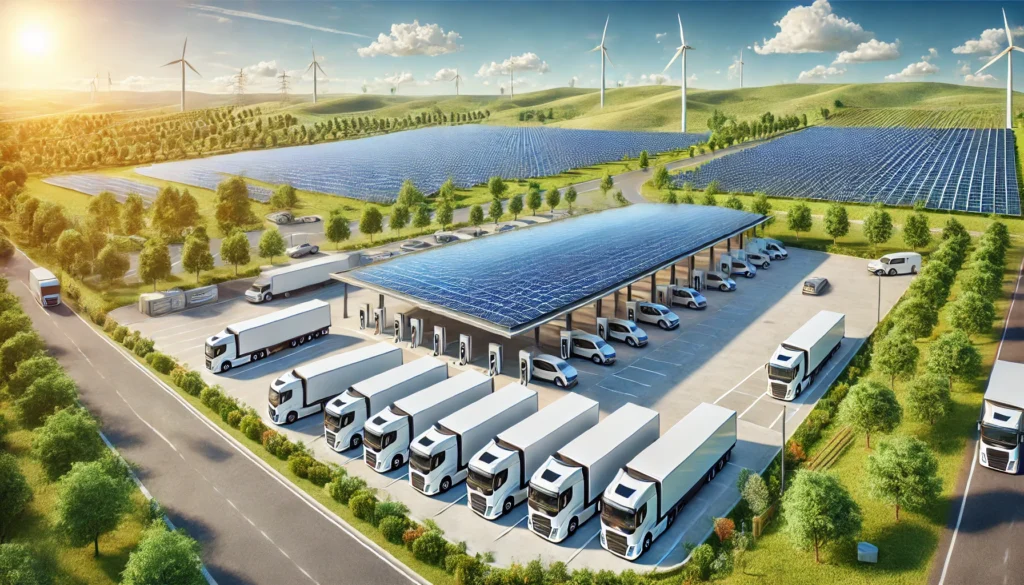The electrification of trucking isn’t just inevitable—it’s shaping up to be one of the most transformative shifts in logistics and transportation history. The reasons are simple: electric trucks offer unparalleled cost savings, and when combined with autonomous driving technology, the economics become irresistible for fleet operators. Australia, with its vast distances and abundant solar energy potential, could play a leading role in this revolution, showcasing how clean energy can power the future of heavy transport.
Cost Savings: The Ultimate Driver of Change
Fleet owners are always seeking ways to reduce costs, and electric trucks deliver on multiple fronts:
- Fuel Costs: Diesel trucks are expensive to fuel, especially given the volatile global oil market. Electric trucks, on the other hand, run on electricity—often at a fraction of the cost per kilometer. In Australia, where solar power is abundant, the cost of charging can drop even further, especially when truck depots install solar arrays backed by Tesla Megapacks or similar battery systems.
- Maintenance: Electric trucks have fewer moving parts compared to diesel engines. There’s no need for oil changes, and brakes last longer due to regenerative braking systems. These factors drastically lower maintenance costs, increasing uptime for fleet operations.
- Autonomy Savings: Once autonomous driving technology is fully integrated into trucking fleets, the largest operating expense—driver wages—will be minimized. Autonomous electric trucks can operate around the clock, increasing efficiency and maximizing profits.
To illustrate the cost advantages, consider the following comparison over a 10-year operational cycle:

The electric truck not only drastically reduces operating costs but also demonstrates a significant advantage in total cost of ownership, making the transition economically compelling.
The Role of Charging Corridors and Solar Energy in Australia
One of the perceived hurdles for electric trucking has been charging infrastructure, but this is rapidly becoming a non-issue.
Australia is uniquely positioned to lead in the development of solar-powered charging corridors. The country’s vast, sun-drenched landscape makes it ideal for deploying solar farms alongside highways, directly powering high-capacity charging stations. By pairing these solar installations with Megapack battery systems, Australia can ensure consistent power availability for electric trucks, even during peak demand periods or at night.
These charging corridors won’t just enable electric trucking—they’ll do so at a marginal cost compared to the massive savings fleet operators will achieve. Governments and private enterprises alike have a vested interest in fast-tracking this infrastructure to unlock the economic benefits of electrified freight.
Massive Benefits Beyond Costs
The electrification of trucks offers advantages that extend far beyond economics:
- Reduced Pollution: Diesel trucks are a major source of greenhouse gas emissions and air pollution. Replacing them with electric trucks eliminates tailpipe emissions, improving air quality and reducing Australia’s carbon footprint.
- Lower Noise Levels: Electric trucks are much quieter than their diesel counterparts. This will be particularly noticeable in urban areas, where reduced noise pollution can improve the quality of life for residents and create safer environments for pedestrians and cyclists.
- Energy Independence: By harnessing solar energy to power electric trucks, Australia can reduce its reliance on imported oil. This shift not only strengthens energy security but also keeps more economic value within the country.
A Quieter, Cleaner Future
Imagine a future where highways are lined with solar farms powering silent, zero-emission electric trucks. Logistics costs have plummeted, goods move more efficiently, and cities are no longer choked with diesel fumes or noise. This isn’t just a vision—it’s a reality already beginning to unfold.
Australia’s unique conditions make it a natural proving ground for this future. By leveraging its solar resources and embracing the economic advantages of electric and autonomous trucks, the nation can lead the global transition to a cleaner, quieter, and more cost-effective freight system.
The challenges that must be overcome are fewer than they seem, and the potential savings—economic, environmental, and societal—are simply too massive to ignore. The electric trucking revolution is here, and it’s powered by the sun.


